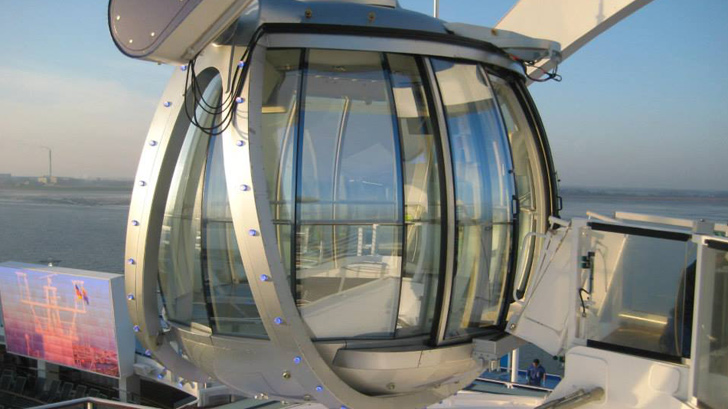
Specialist Training Consultants (STC), based in East Sussex, are experts in technical access and rescue solutions. They've recently been putting DMM equipment to use in a unique setting: creating a rescue system on some of the biggest passenger ships to ever set sail. STC Training Director, Tom Gwilliam, explains what the Royal Caribbean North Star project involved and their innovative rescue solution.
"The North Star is a gondola style glass capsule mounted on a hydraulic arm that sits atop Royal Caribbean’s Quantum Class of ships, which are among the largest cruise liners in the world. It can be raised 300 feet above sea level and offers passengers panoramic views of their surroundings."

"While the North Star has a number of fail-safe systems including secondary motors and a return to home function, there was still a need for a fool proof system of evacuating guests should the motorised systems fail. Royal Caribbean approached us to work with their engineers and cruise operators to find a solution."
"We worked with Royal Caribbean’s technical staff doing numerous calculations of vectors, forces and guest weights to establish a safe system of work. This system is based on a traditional Tyrolean traverse, and uses two Dyneema® cables that are housed in a channel running along the North Star’s arm. These release from the channel when pulled from the deck, and can then be tied off and tensioned. The Dyneema® lines include hauling lines to enable crew to bring passengers back to the deck even if the North Star is fully extended horizontally out towards the sea. To our knowledge this is the first time specialist Dyneema® cables have been used in this way."
"We used a range of manufacturer’s equipment in our system, and DMM was the obvious choice for metal hardware. We used Klettersteig and Boa Locksafe connectors plus Scaffold Hooks (both carbon and stainless steel models) due to their ease of operation, large gate opening and traceability. We also found they are compatible with lots of other components due to their large internal working volumes and gate clearance. The stainless steel is worth every penny, as metalwork in this environment takes a lot of punishment, and the high load ratings make them an ideal choice when dealing with high vector forces."
STC was founded in 1997 by Peter Gwilliam, an ex-London firefighter who had been instrumental in forming the first London Fire Brigade rope rescue team. All of their trainers are or were in the frontline UK emergency services and their main skill set is in technical rescue.